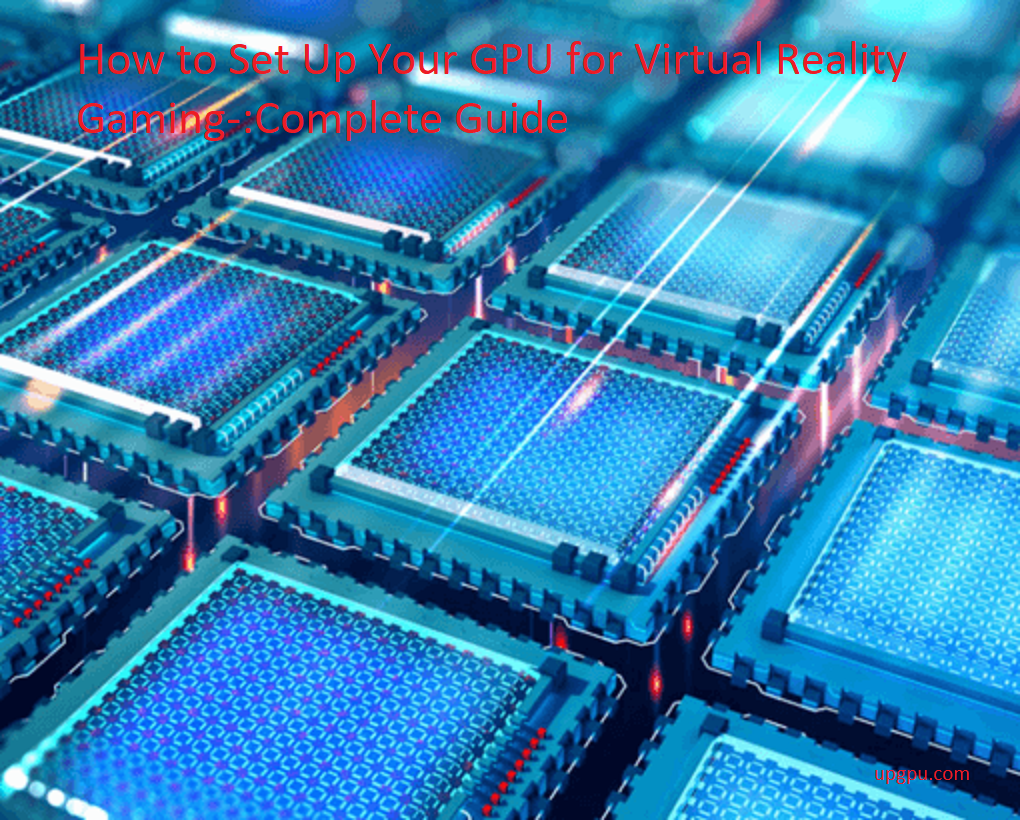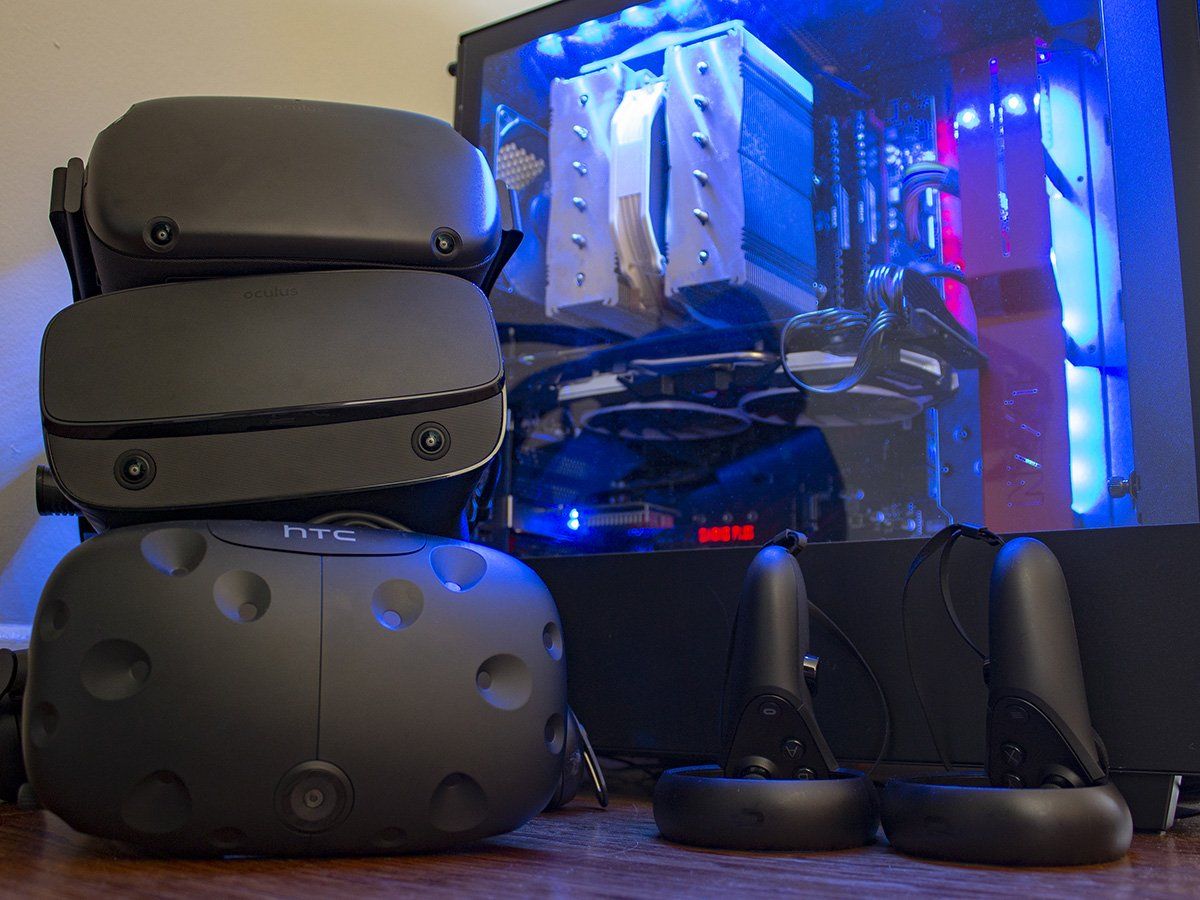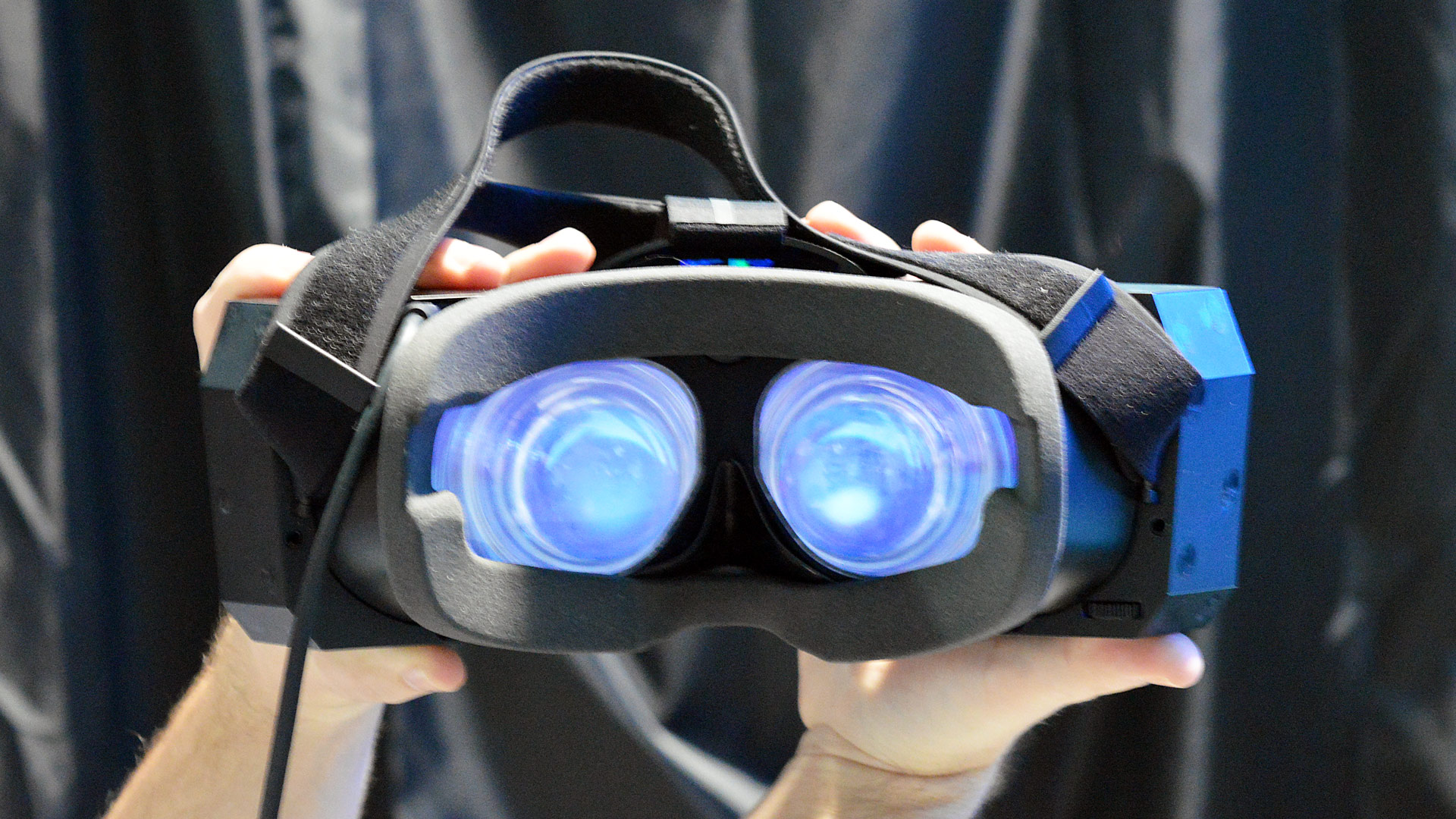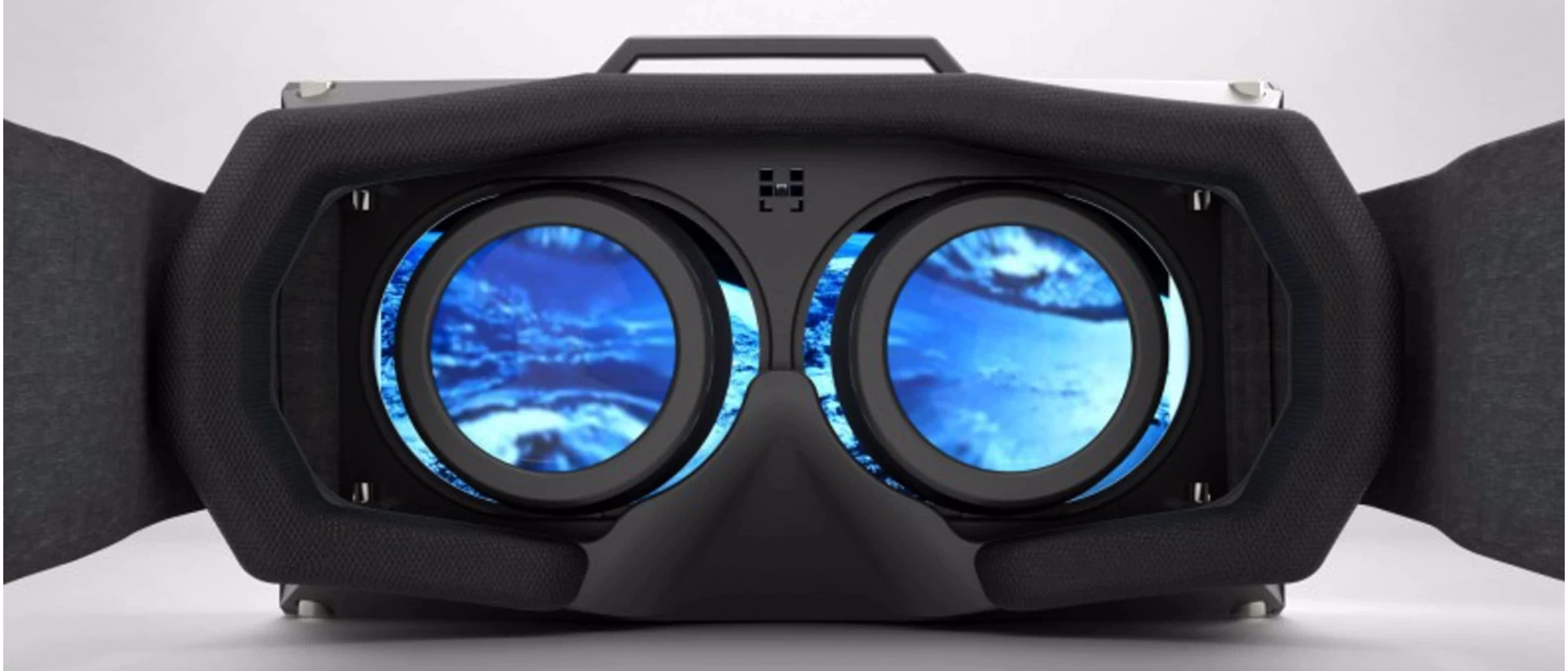Are you looking to optimise your gaming setup for a hyper-realistic virtual reality experience? You’ve come to the right place!
In this guide, we’ll show you how to get the most out of your GPU hardware for an incredible VR gaming adventure. So, let’s get started!
Virtual Reality (VR) gaming is an immersive form of digital entertainment that can take your game experience to the next level. VR gaming requires specific hardware and setup requirements to ensure a great user experience. This guide is intended to help users understand what is required for setting up GPUs for virtual reality gaming, including the requirements for compatible graphics cards, DisplayPort connections, and driver updates. We will also cover the best practices for optimizing your VR gaming setup and tips on troubleshooting common issues. By the time you’ve finished reading this guide you will have a better understanding of how to set up your GPU for optimal VR performance and reliability.

Explanation of virtual reality gaming
Virtual reality (VR) gaming is an immersive experience that transports you into another world. Instead of sitting in front of a screen, the player can interact with and explore a virtual environment. It uses powerful hardware that allows for the creation of large and complex 3D worlds, allowing for intricate and realistic gameplay.
Virtual reality gaming requires advanced graphics processing units (GPUs) in order to run realistically. GPUs, also known as graphics cards or video cards, are specialized pieces of hardware that process images for display on a monitor or television. For users interested in playing VR titles, having the most up-to-date GPU can make a huge difference to the experience. In addition to providing higher frame-rates and image quality, modern GPUs also offer features specifically designed for virtual reality gaming such as improved ergonomics and compatibility with tracking devices.
When selecting a GPU for VR gaming it’s important to take into account both hardware specifications such as processor speed and resolution limits, as well as software requirements such as driver support and compatibility with game engines like Unity or Unreal Engine 4 (UE4). Understanding how these components work together will help users make an informed decision when making their purchase so they can get the most out of their virtual reality gaming experience.
Importance of having a properly configured GPU
The graphics processing unit (GPU) plays a vital role in virtual reality (VR) gaming. It is essential to have a GPU that can power up the experience with strong visuals, high frame rates, and smooth, immersive gameplay. A powerful GPU will also ensure you have access to the latest games and applications that are available. An incorrectly configured GPU can significantly impact the level of detail, resolution, refresh rate and overall performance of your virtual reality system.
When setting up your GPU for VR gaming, there are a few key factors to consider: hardware compatibility, display settings and game settings. Ensuring that all relevant hardware components are compatible with each other is essential for optimum performance. The display must be calibrated correctly to ensure the correct balance between image quality and performance so as not to overload the GPU or cause strain on your eyes. Finally, the game settings should be adjusted according to how strong or weak your GPU is; this may include lowering graphics options like texture filtering or anti-aliasing in order to maximize VR performance.
If you want easy setup for your VR system then invest in a setup guide along with online resources from experienced users who have gone through a similar journey as you are about to embark upon. Following these steps will ensure that you get a proper configuration of your hardware components so that they work together properly and provide you with the best virtual reality experience possible.
Overclocking Your GPU

Before diving into overclocking, it is important to note that excessive overclocking can put your GPU at risk of damage. If the system is making too many adjustments too quickly, the extra strain can cause hardware malfunction or breakdown. Overclocking should be performed carefully and systematically, and with proper precautions in place. Accordingly, it is important to assess the heat output as well as other features such as power delivery systems and cooling fans.
Now that you are aware of the potential risks, it’s time to get started. The following steps will help you set up your GPU for virtual reality gaming:
1) Begin by setting all settings back to their default values in order to restore any previous overclock settings; this will ensure that you are starting on a clean slate.
2) Use a basic overclocking application or software program such as MSI Afterburner to increase your core clock increments and adjust fan speed settings (if necessary).
3) Monitor temperatures during gameplay; these should not exceed 75-80 degrees Celsius for regular stress-testing but may reach 90 degrees Celsius during more intensive processing tasks. If temperatures remain constant at high levels then consider applying thermal paste on your graphics card or investing in a new cooling system to compensate.
4) Increase core voltage if necessary; however, this has its own set of risks which must be evaluated prior to adjustment in order to prevent any possible damage from occurring due to excessive voltages being applied.
5) Finally test benchmarking scores regularly throughout each gaming session – paying close attention fluctuations or any irregularities which may occur due possible instability issues.
Explanation of GPU overclocking
GPU (Graphics Processing Unit) overclocking is the process of increasing the operating speed of your GPU beyond stock specifications. By overclocking your GPU, you can extract even more performance from it, pushing it to its maximum potential. However, as with all overclocking activities, there is a risk associated with running your hardware at higher speeds than its intended rating.
GPU clock speeds are determined by changing two parameters: the base and boost clocks. The base clock determines how fast the core of the GPU runs at its default state when no additional power is demanded. The boost clock is an accelerated state that increases clock speed as more load or power is drawn from the graphics card. The more powerful a GPU becomes, the greater its need for increased voltage so that peak performance can be achieved and maintained consistently over time.
In order to successfully overclock your graphics card, you must be familiar with basic tools such as MSI Afterburner or EVGA Precision XOC in order to adjust both core and memory frequencies to get an optimal gaming experience without sacrificing stability and reliability. Additionally, in order to push even further performance from your graphics card you may also need to access settings such as advanced fan curves and voltage/power restrictions depending on which overclocking software you are using.
Benefits and risks of overclocking

The key component to most gaming systems these days is the GPU (Graphics Processing Unit), which determines the quality of images rendered on a gaming monitor. If you want to maximize your gaming performance, you may want t consider overclocking your GPU. Overclocking involves setting your GPU’s core and memory speeds higher than stock levels to increase its performance beyond that of its base specifications. This can offer various benefits, such as improved frame rates, smoother video playback and faster loading times. However, it also carries some risks that should be considered before attempting any such changes.
Benefits of Overclocking
The primary benefit of overclocking your GPU is improved gaming performance and higher framerates. This can make the difference between enjoying a smooth game experience with high frame rates and suffering through laggy visuals with choppy frames. Additionally, it allows increased processing power with more efficient image quality which can be useful for both professional content creators who need reliable and enhanced image rendering for their work and for gamers who are looking for a competitive edge in their gameplay by avoiding graphical hiccups or latency issues.
Risks of Overclocking
While overclocking can be a great way to improve gaming performance, it’s important to remember that it does come with some risks. Any time you increase the speed of your hardware components without altering other factors like voltage or temperature settings accordingly, you run the risk of damaging them permanently leading to reduced reliability or even physical destruction in extreme cases. Additionally, heat produced from overclocked GPUs often causes damage due to thermal throttling triggered by temperatures beyond what they were designed to handle – This phenomena is known as heatsink failure or chipset meltdown which could lead to instability or even data loss! As always when tinkering with things like hardware settings ‒ safety should always come first in order to protect yourself from any potential difficulties down the road!
Updating Drivers
Ensuring your GPU drivers are up to date is essential for VR gaming. The GPU manufacturer typically releases a new driver once a month. Check the website of your card’s manufacturer regularly to get the latest and recommended driver version. Most GPUs today offer auto-updating and will notify you when an update is available, but you should double-check that the graphics card operates correctly after an update. Some updates can cause gfx issues and two known issues with some NVidia drivers can cause stuttering if G-Sync is enabled, or if an Apex Legends game session is running on medium or low settings with no FPS limitation set in place.
It’s important to keep in mind that some versions of drivers may cause compatibility issues with games or software, so consider updating each component at a time rather than all at once; otherwise, it could be hard to identify which update caused the problem.
Importance of up-to-date GPU drivers

A dedicated graphics processing unit (GPU) is essential for optimal performance when playing games — especially in virtual reality. But maintaining up-to-date GPU drivers is just as critical. Without properly functioning GPU drivers, your graphics card may not only fail to perform at its best, but could possibly cause some of your games to crash or cease functioning altogether.
Updating your GPU drivers is an easy task and can improve the overall performance of both games and other graphical programs. To get the most out of your gaming experience, you should regularly check for new driver updates from the manufacturer’s website and install them as soon as they become available. Doing this ensures that the latest bug fixes and improvements are included with each update — meaning you get a smoother gaming experience with minimal issues.
From time to time, it’s also important to do a clean reinstallation of your GPU driver as part of regular maintenance. Installing a “clean” version helps ensure that all components have been updated correctly so that no conflicting files can cause problems down the line. This process removes any corrupted data or incorrect settings while leaving all related applications still installed, ensuring continuous support for any games you’ve installed on your computer.
How to check for updates
Before setting up your GPU for virtual reality gaming, it’s important to check for any available updates. Depending on the manufacturer and model of your card, this process can vary. However, it is recommended to use the graphic card manufacturer’s website or tool to check for updates rather than relying on Windows Update Service. This will ensure that you get the latest version compatible with virtual reality gaming.
To begin, go to the website of your graphic card’s manufacturer and download the driver software. Follow instructions given on how to install the latest version of graphics drivers and restart your computer if necessary. Once the update is complete, check if everything works properly by running a simple graphics test or benchmarking application before jumping into virtual reality gaming sessions.
Configuring Graphics Settings
Configuring your graphics settings is an important element of setting up your virtual reality (VR) system for gaming. The graphics settings you use must be compatible with the hardware of your GPU and the resolution of your display. Depending on the type and model of GPU, there are a number of settings that you can customize to ensure optimal performance.
When configuring graphics settings, it’s best to start with the basics – select your desired video resolution and refresh rate. This will ensure that the image you see in VR is smooth while also remaining sharp. Additionally, set your monitor’s color profile to either sRGB or Adobe RGB – both of these provide a broad color gamut that improves image quality when using VR.
The next setting to adjust is anti-aliasing (AA). AA helps smooth jagged edges in all games, especially in those with 3D elements such as virtual reality titles. The more powerful GPUs can handle higher levels of AA than weaker ones – but be sure to experiment with different levels until you find the perfect balance for your machine and display combination.
Anisotropic filtering (AF) is another important setting; AF affects texture quality, which impacts image sharpness in VR games or applications that rely heavily on textures to create lifelike environments and character models. AF should only be enabled if you have a powerful enough graphics card, however doing so will noticeably improve image quality without significantly impacting performance.
Finally, if you’re playing on a display higher than 1080p – like 1440p or 4K – then consider disabling anti-aliasing altogether as these resolutions already offer better clarity than lower resolutions do when AA isn’t enabled. Enabling anti-aliasing also adds additional load to both your CPU and GPU which can negatively affect performance in graphically intensive VR titles or applications. Remember to always experiment with various graphical presets until you find one that works best for you!
Optimizing graphics settings for VR gaming
For the best virtual reality gaming experience, it’s important to have an adequate GPU and take some time to fine-tune your graphics settings. GPUs are often the most expensive component in a gaming system, but they deliver high performance at a lower energy cost than any other kind of processor. Whether you’re investing in a brand new graphics card or looking to improve performance on an aging PC, there are several steps you can take to get the most out of your setup when it comes to gaming in VR.
Graphics Settings Overview
The first step to optimizing your graphics settings for VR gaming is understanding what adjustments you can make. Most modern GPUs allow for customizing how much power is devoted to rendering visuals (such as frame rate, resolution and lighting) as opposed to sound and other features. You’ll want to adjust each setting taking into account your monitor size and refresh rate as well as the quality level of your game or application. You may find you need to regularly modify some of these values over time should the requirements for optimal performance change.
In general, for VR gaming you’ll want higher resolutions with more anti-aliasing enabled — leading to smoother edges — and improved detail levels on all surfaces with shadows also turned up higher if possible. Other parameters such as texture filtering (which affects how textures look when viewed from a distance) can also be tweaked and should generally be set quite high if not automatically bypassed due the speed required by VR titles like those included with HTC Vive or Oculus Rift. After selecting the correct settings, it’s important that you then test them out so that any configuration changes have actually been successful before proceeding further on wiping one’s slate clean when troubleshooting VR optimization issues!
Adjusting resolution, anti-aliasing, and other settings
When it comes to setting up the ideal gaming environment for virtual reality experiences, one of the most important tasks is configuring the resolution, anti-aliasing and other settings. High resolution visuals are essential to help create that immersive feel and smooth out sharp edges in virtual worlds. However, factors such as your GPU hardware specs and available display ports will determine how you should configure your settings.
It’s best to start by determining your GPU’s specifications. While most modern mid-to-high range GPUs have a minimum level of performance required for virtual reality gaming, viewing resolutions may vary depending on specific make and model. Take into consideration the maximum resolution available for outputting video signals whether standard or digital video interface (DVI) displays are used. You should also be mindful that some GPU cards may include proprietary visual technologies such as Nvidia’s G-Sync or AMD’s FreeSync which must be enabled in order to benefit from smoother motion playback anti-tearing effects.
Next, examine available display ports on your system –– like HDMI 1.4 or DisplayPort 1.2 –– that can support high resolutions up to 4K (3840 x 2160). Note it is recommended you use a HDMI 1.4 port or higher version if you wish to play games with 3D stereoscaling enabled using modern graphics technologies like Nvidia’s GeForce GTX 1080 series card as they require specialized hardware support to render at higher resolutions with sharper images suitable for virtual reality gaming environments while reducing latency common among other two dimensional hardware equivalents. This can also help reduce image artifacting and bleeding edge fringing commonly experienced when playing games with offscreen or near edge objects found in first person shooter titles often used when testing motion tracking rig configurations prior to commercial deployments involving large groups of users located within an open space such as retail venues or crowded stadiums.
Conclusion
It can be beneficial to have the right setup to ensure you get the best performance and experience out of your virtual reality gaming. Properly configuring your GPU, optimizing software tools, and maintaining regular driver updates are key components to having an enjoyable VR gaming experience.
By following a few simple steps such as making sure you have modern GPU, enabling virtual reality acceleration in the NVIDIA control panel or AMD Radeon Software, setting up multiple displays, updating drivers and software tools, focusing on cooling components in your system, and allocating proper resources to your GPU you should be able to start enjoying that amazing virtual reality gaming.
So hopefully now you are armed with enough information about setting up your system for virtual reality gaming!
FAQs
How good of a GPU do you need for VR?
To have a smooth and immersive VR experience, it’s recommended to have at least a mid-range GPU with a minimum of 6GB VRAM, such as an NVIDIA GTX 1060 or AMD Radeon RX 580.
Does VR use your GPU?
Yes, VR applications heavily rely on the GPU to render high-quality graphics and maintain a high frame rate.
What is the minimum GPU for VR development?
The minimum GPU for VR development would be an NVIDIA GTX 970 or AMD Radeon R9 290, but it’s recommended to use a more powerful GPU to ensure a smoother development experience.
What GPU is required for SteamVR?
SteamVR recommends a GPU with at least 6GB VRAM, such as an NVIDIA GTX 1060 or AMD Radeon RX 580, for a good VR experience.
What is the best budget GPU for VR gaming?
The NVIDIA GTX 1660 Super is a good budget GPU option for VR gaming as it provides a decent VR experience at a lower cost compared to high-end GPUs.
Is VR harder on CPU or GPU?
VR applications are generally more GPU-intensive than CPU-intensive, but both the CPU and GPU need to work together to provide a smooth VR experience.
Can a gaming laptop run VR?
Yes, many gaming laptops are capable of running VR applications as long as they meet the minimum system requirements, including a compatible GPU and sufficient RAM.
What is the best CPU for VR gaming?
For VR gaming, a high-end CPU, such as an Intel Core i9 or AMD Ryzen 9, is recommended to provide sufficient processing power for smooth gameplay.
Is RTX 3050 laptop VR Ready?
The RTX 3050 laptop GPU is VR ready and can provide a decent VR experience, although more demanding VR applications may require a more powerful GPU.
Does GPU matter for virtual machines?
The GPU is important for running virtual machines that require graphics-intensive tasks such as gaming, 3D modeling, or video editing. Virtual machines can utilize the GPU for faster rendering and improved performance.
Is GTX 1650 good for VR?
The GTX 1650 is capable of running VR applications, but its performance may not be as smooth as higher-end GPUs. It’s recommended to have a mid-range GPU with at least 6GB VRAM for a better VR experience.
See More
- Best GPU for Video Editing 2023
- Best 3090 gpu 2023
- Best gpu for vr 2023
- Best cpu gpu combo 2023
- Best gpu for warzone 2023

